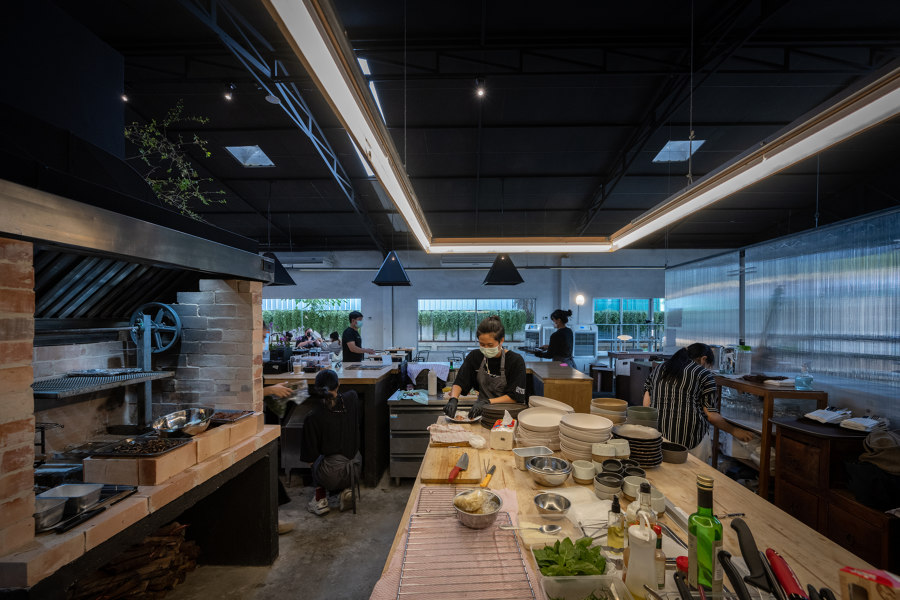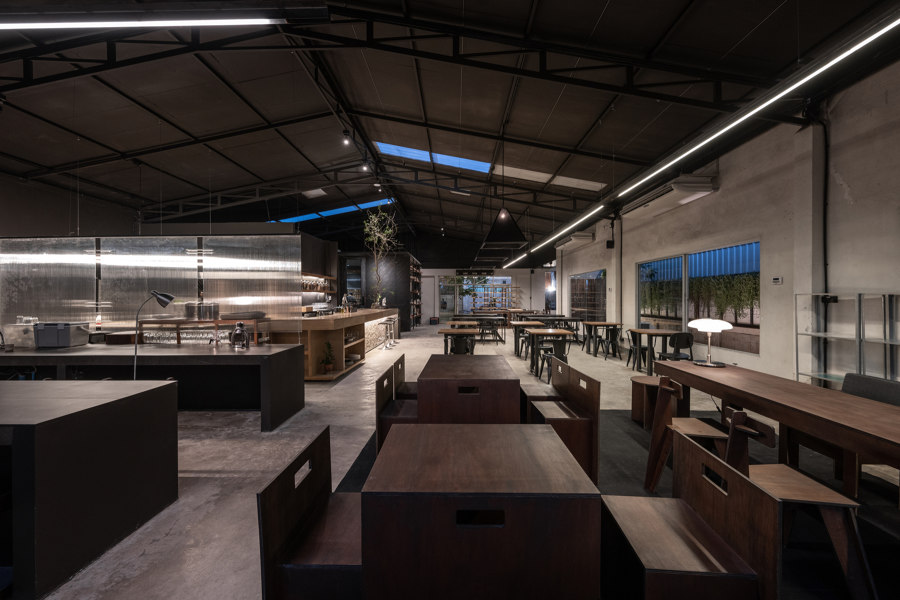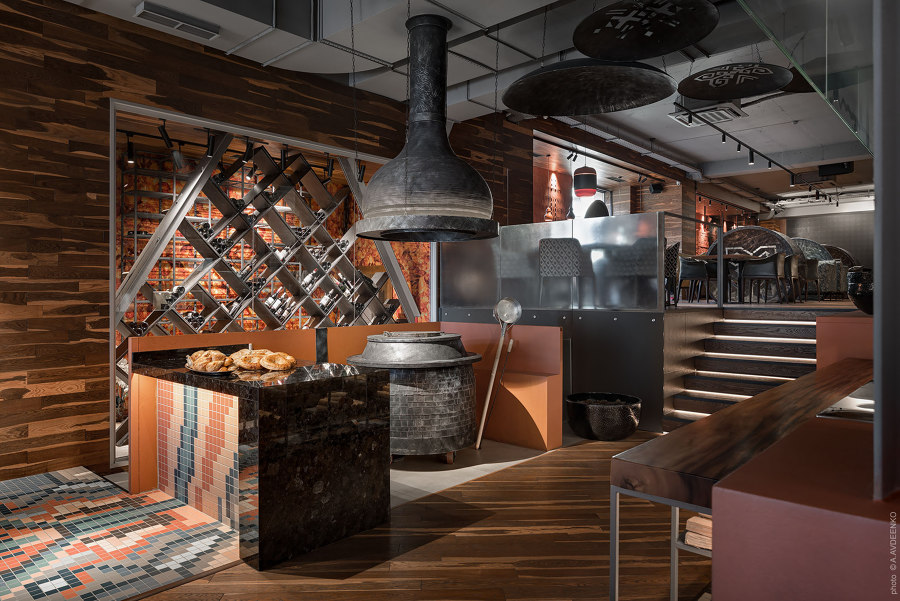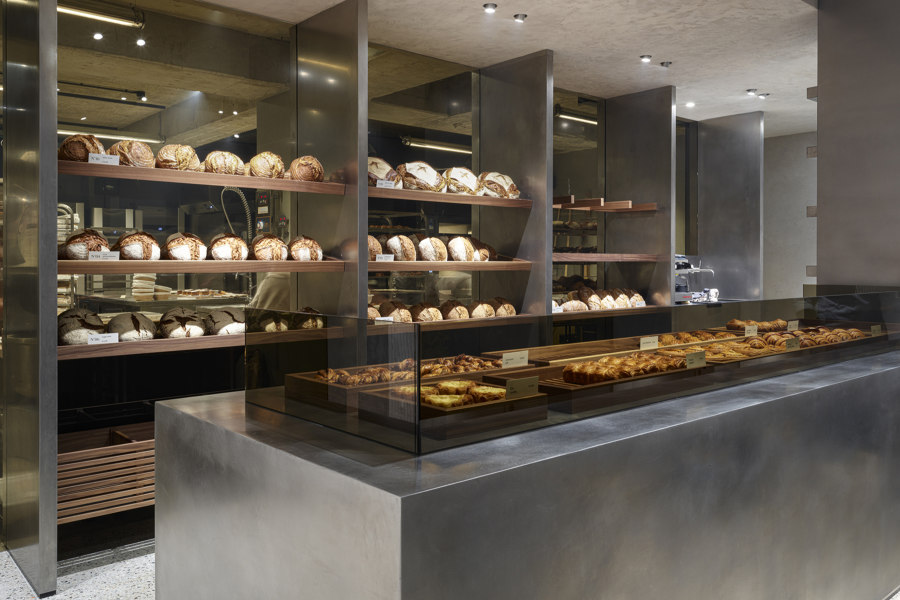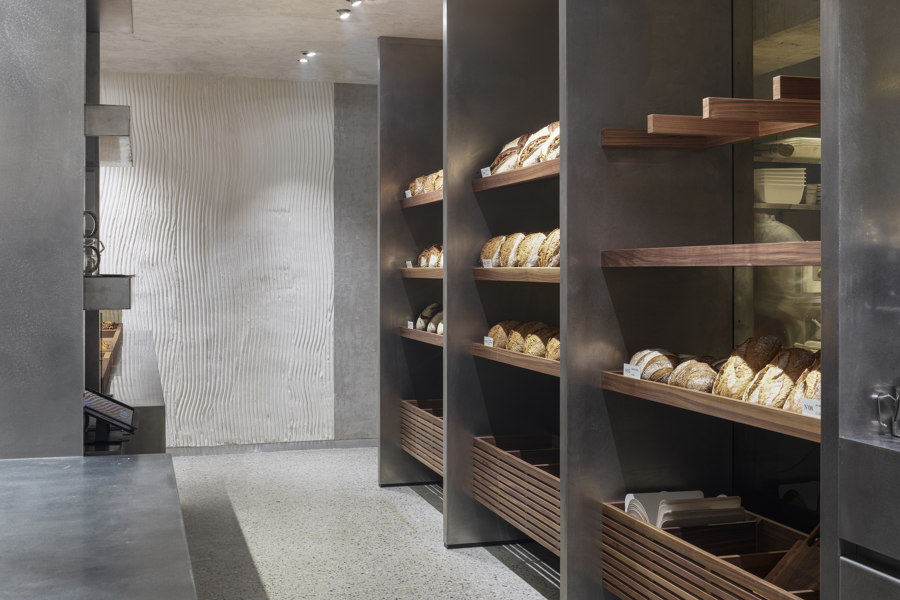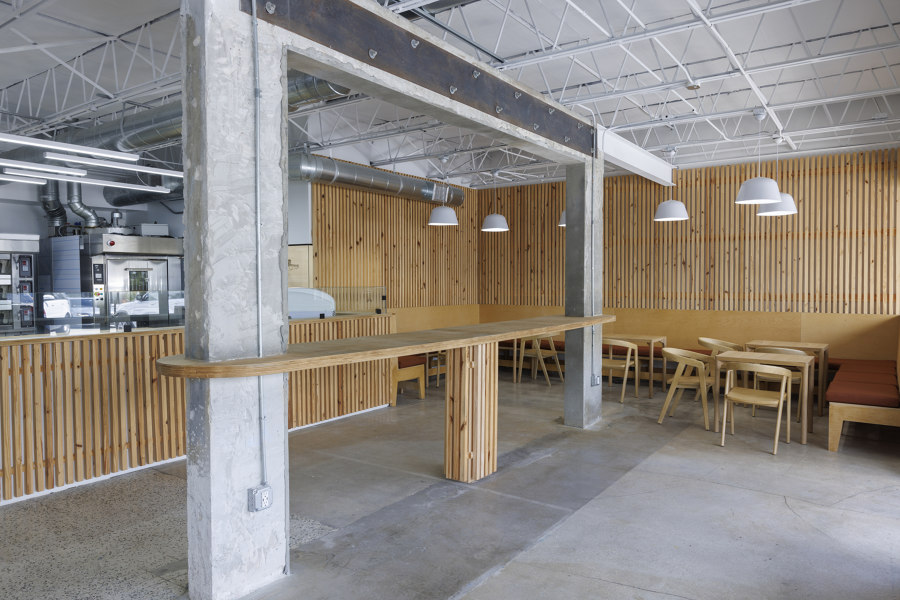Open-kitchen restaurants that put transparency on the menu
Scritto da James Wormald
24.07.23
How can we trust what goes into our food if we can’t see it? These honest restaurants and bakeries prove the quality and freshness of their cooking by stepping out from behind the swinging kitchen door.
Traditional cooking processes combine with cultural decorative accents at the Ugli Restaurant, such as terracotta textures, mosaic tiling and suspended pilaf cauldrons. Photo: Andrey Adveenko
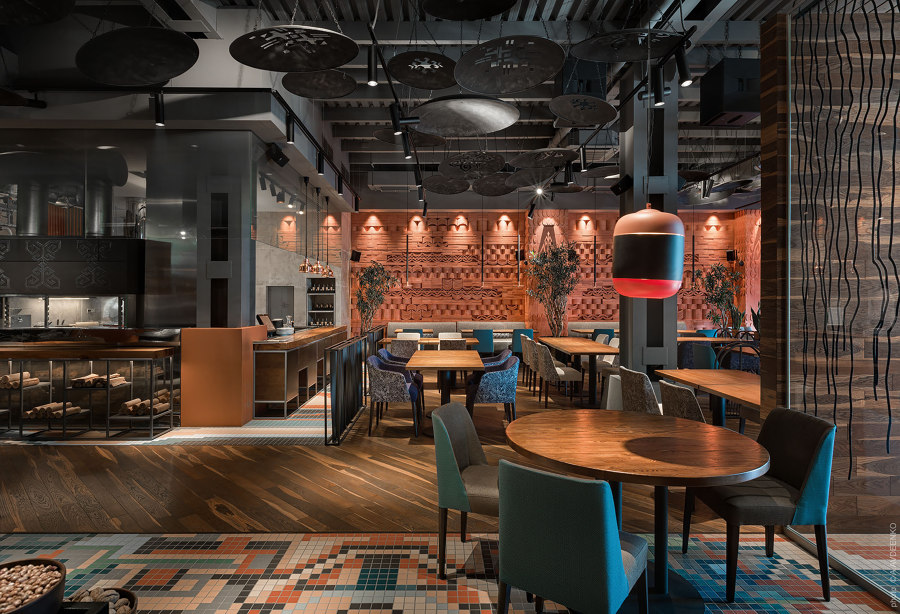
Traditional cooking processes combine with cultural decorative accents at the Ugli Restaurant, such as terracotta textures, mosaic tiling and suspended pilaf cauldrons. Photo: Andrey Adveenko
×What you see, is said to be what you get. The low-skilled cooking techniques and apparatus employed at branded fast-food restaurants, for example, are presented in full visibility to waiting customers. But this concept for designing open, transparent hospitality environments at least serves customers with honesty, because although the freshest ingredients and cordon bleu techniques are nowhere to be seen, neither is the grease and grime formerly associated with the category of eatery.
By employing open-kitchen concepts, professional kitchens that use talented chefs and high-quality ingredients are able to prove it
Compare that to more upmarket establishments that keep the cacophony of a commercial kitchen hidden from view during service, and you start to wonder what else they might be hiding. By installing the same open-kitchen concept, professional kitchens that use talented chefs and high-quality ingredients are able to prove it.
The Gimme Shelter Café and Workshop by Housescape Design lab features an open-kitchen concept that encourages customers to converse with the kitchen staff and each other. Photos: Rungkit Charoenwat

The Gimme Shelter Café and Workshop by Housescape Design lab features an open-kitchen concept that encourages customers to converse with the kitchen staff and each other. Photos: Rungkit Charoenwat
×Gimme Shelter Café and Workshop in Chiang Mai, Thailand, by Housescape Design Lab
In order to create a relaxed environment for customers to wind down or to escape distractions and lose themselves in the eyes of another, restaurants and cafés traditionally opt to keep the raucous sounds, sights and smells of a stressful commercial kitchen tucked away out of sight. It can be argued, however, that our most relaxing and enjoyable meals occur when they’re eaten with, and cooked by, friends.
The open design language intentionally inserted into the warehouse-sized Gimme Shelter Café encourages discussion amongst friends and strangers who soon feel like friends. Set face-to-face with talented chefs whose expertise lies in listening as well as cooking, customers begin to feel at home. Conversations between customers and staff quickly spark a communicative atmosphere, meanwhile, that spills out across the dining table. ‘We hope that our city will have an architecture that is related to the memories of diverse people,’ explain the architects Housescape Design Lab, ‘create overlapping social dimensions and leave some traces of memory in the quality of small, person-to-person conversations.’
Culture is a large part of the decor and the menu at the Ugli Restaurant, with traditional cooking processes not only visible but also open for all to try their hand at. Photos: Andrey Adveenko
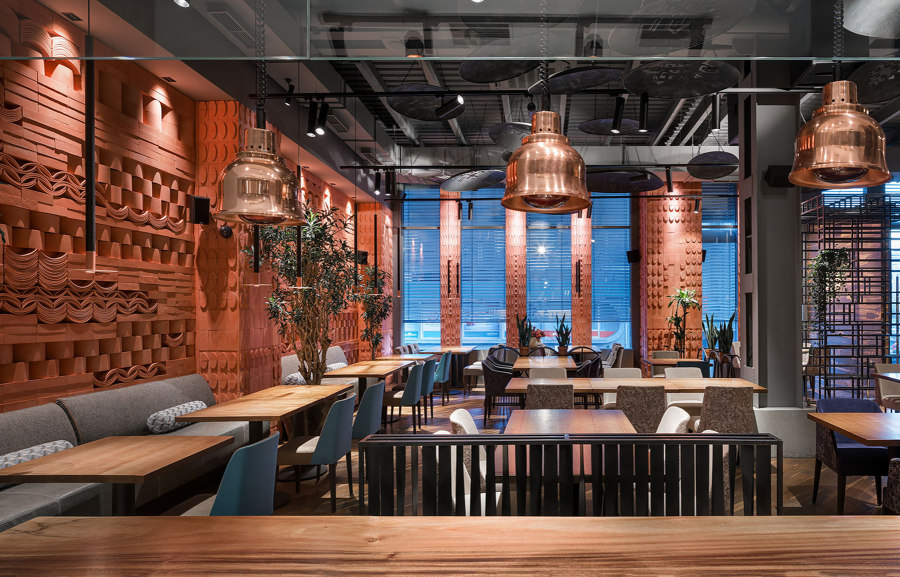
Culture is a large part of the decor and the menu at the Ugli Restaurant, with traditional cooking processes not only visible but also open for all to try their hand at. Photos: Andrey Adveenko
×Ugli Restaurant in Kyiv, Ukraine, by loft buro
At the part-restaurant, part-cultural museum space of Ukraine’s Ugli Restaurant in Kyiv, customers are not only encouraged to see the traditional cooking processes of the diverse regions of the Caucasus, Turkey, Lebanon and Turkmenistan, but the ‘open-kitchen, barbecue, tandoor and market food showcase inspired by Asian bazaars,’ introduce the project architects loft buro, feature ‘an intriguing way of cooking that allows guests to watch or even participate in the process.’
The combination of cultures and traditions at Ugli is reflected in the restaurant’s menu and interior decoration
This combination of cultures and traditions at the restaurant is ‘vividly reflected in the design of the restaurant’s menu and in its interior decoration,’ explain loft buro, where traditional green and azure accents converse with the shape of traditional pilaf cauldrons, symbolic patterns of the Asian regions reflected in polished metal elements and ‘terracotta surfaces that resemble the textures of cult buildings.’
Open-backed shelving at The Bakery allows customers to peek through at the kitchen behind, while an austere decor of stainless steel ensures the loaves’ golden crusts star. Photos: Jean-Pierre Gabriel
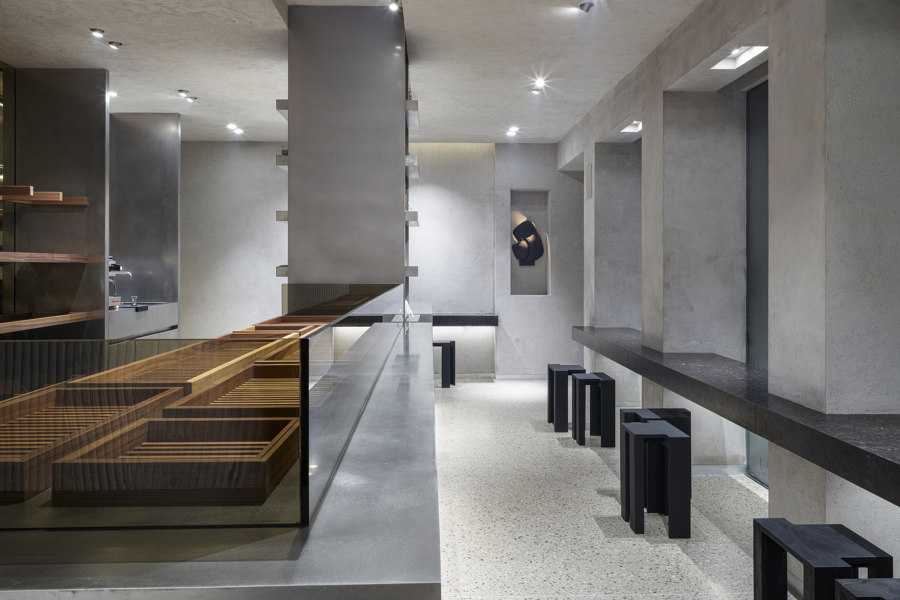
Open-backed shelving at The Bakery allows customers to peek through at the kitchen behind, while an austere decor of stainless steel ensures the loaves’ golden crusts star. Photos: Jean-Pierre Gabriel
×The Bakery by Joost Arijs in Ghent, Belgium, by Glenn Sestig Architects
When master Belgian chocolatier Joost Arijs opened a bakery and viennoiserie to serve Ghent’s most discerning sweet-toothed clientele, he chose the laminated luxury of the pastry treats as his star attraction. In partnership with Glenn Sestig Architects, The Bakery features ‘functionalist and minimalist design,’ explain the architects, handing ‘a leading role to the product in a visible baker’s studio.’
The bakery, in fact, uses the same honest design feature employed by fast-food restaurants, presenting racks of freshly-prepared loaves to serve as a backdrop behind the service counter, where an array of viennoiserie treasures are laid out in walnut trays in front. The contrasting combination of the surface materials of natural stone and brushed stainless steel, along with the warmth of the walnut trays and shelving creates a ‘fascinating contrast between architecture and craftsmanship,’ describe the architects, with austere materials on one hand, and the warm, golden hue of freshly-baked bread on the other.
The bar-height counter in the centre of the Caracas Bakery allows customers to watch the bakers amongst the scent of fresh-baked bread. Photo: James Jackman
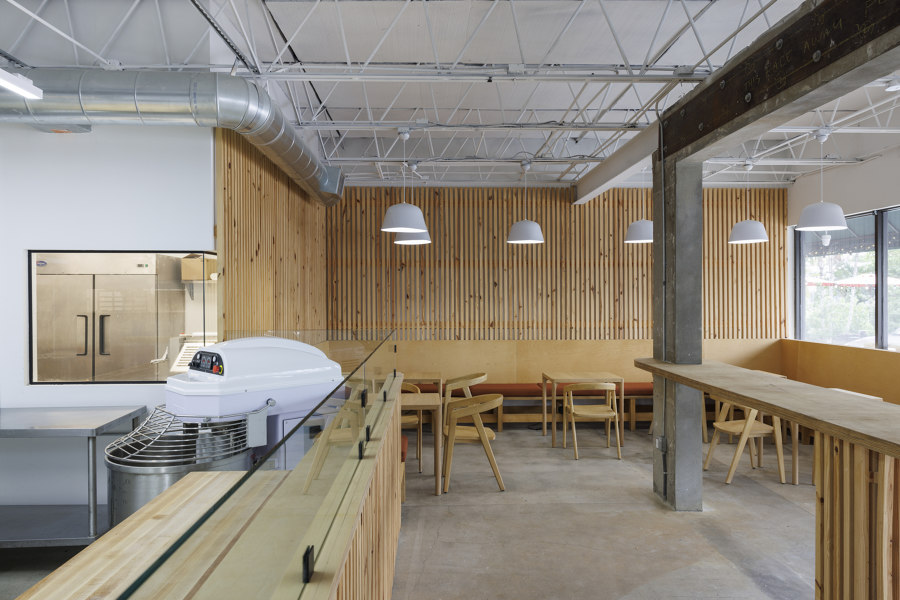
The bar-height counter in the centre of the Caracas Bakery allows customers to watch the bakers amongst the scent of fresh-baked bread. Photo: James Jackman
×Caracas Bakery in Miami, Florida, US, by Acta Studio
The sense of smell is one of the most emotionally rewarding senses of the human body. And the scent of freshly-baked bread makes bakeries some of the most enjoyable places to spend time in. At the Caracas Bakery in Miami, architects Acta Studio chose to position the bakery’s two main ovens and kitchen worktops in the centre of the space, ringed by a half-height wall that allows the sight and scent of fresh-baked bread to drag customers inside.
The bar-height counter is in a perfect position. In sight and in noseshot of the open kitchen
Once in, a bar-height counter is in a perfect position to stand at. In sight and in noseshot of the open kitchen. ‘Inspired by minimalist Scandinavian design,’ explain Acta Studio, the bakery uses a mixture of neutral earth tones and natural materials – with handmade wooden display spaces and wood panelling – bringing together the two handcrafted arts of carpentry and baking.
© Architonic
Head to the Architonic Magazine for more insights on the latest products, trends and practices in architecture and design, or find inspiration in a whole world of projects from around the globe through ArchDaily's architecture catalogue.

